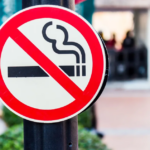Cholesterol is a fatty substance found in animal tissue and is an important component to the human body. It is manufactured in the liver and carried throughout the body in the bloodstream. Problems can occur when too much cholesterol forms an accumulation of plaque on blood vessel walls, which impedes blood flow to the heart and other organs. The highest cholesterol content is found in meat, poultry, shellfish, and dairy products. Since cholesterol has both a good side and bad side; It is necessary to digest fats from food, make hormones, build cell walls, and participate in other processes for maintaining a healthy body. When people talk about cholesterol as a medical problem, they are usually referring to high cholesterol. This can be somewhat misleading, since there are four components to cholesterol. These are:
1. LDL, the so-called bad cholesterol.
2. HDL, the so-called good cholesterol.
3. Triglycerides, a blood fat lipid that increases the risk for heart disease.
4. Total cholesterol.
High LDL (low-density lipoprotein) is a major contributing factor of heart disease. The cholesterol forms plaque in the heart’s blood vessels, which restricts or blocks the supply of blood to the heart, and causes a condition called atherosclerosis. This can lead to a “heart attack,” resulting in damage to the heart and possibly death. The population as a whole is at some risk of developing high LDL cholesterol in their lifetimes. Specific risk factors include a family history of high cholesterol, obesity, heart attack or stroke, alcoholism, and lack of regular exercise. The chances of developing high cholesterol increase after the age of 45. One of the primary causes of high LDL cholesterol is too much fat or sugar in the diet, a problem especially true in the United States and other developing countries as well. Cholesterol is also produced naturally in the liver and overproduction may occur even in people who limit their intake of high cholesterol food. Low HDL and high triglyceride levels are also risk factors for atherosclerosis.
Causes and symptoms
There are no readily apparent symptoms that indicate high LDL or triglycerides, or low HDL. The only way to diagnose the problems is through a simple blood test. However, one general indication of high cholesterol is obesity. Another is a high-fat diet.
Diagnosis
High cholesterol is often diagnosed and treated by general practitioners or family practice physicians. In some cases, an endocrinologist or cardiologist treats the condition. Total cholesterol, LDL, HDL, and triglyceride levels as well as the cholesterol to HDL ratio are measured by a blood test called a lipid panel. In most adults the recommended levels, measured by milligrams per deciliter (mg/dL) of blood, are: total cholesterol, less than 200; LDL, less than 130; HDL, more than 35; triglycerides, 30–200; and cholesterol to HDL ratio, four to one. However, the recommended cholesterol levels may vary, depending on other risk factors such as hypertension, a family history of heart disease, diabetes, age, alcoholism, and smoking.
Doctors have always been puzzled by why some people develop heart disease while others with identical HDL and LDL levels do not. New studies indicate it may be due to the size of the cholesterol particles in the bloodstream. A test called a nuclear magnetic resonance (NMR) LipoProfile exposes a blood sample to a magnetic field to determine the size of the cholesterol particles. Particle size can also be determined by a centrifugation test, where blood samples are spun very quickly to allow particles to separate and move at different distances. The smaller the particles, the greater the chance of developing heart disease. It allows physicians to treat patients who have normal or close to normal results from a lipid panel but abnormal particle size.
Treatment
A wide variety of prescription medicines are available to treat cholesterol problems. These include statins such as lovastatin, fluvastatin, pravastatin,simvastatin, cervastatin, and atorvastatin to lower LDL. A group of drugs called fibric acid derivatives are used to lower triglycerides and raise HDL. These include gem-fibrozil, clofibrate, and fenofibrate. Doctors decide which drug to use based on the severity of the cholesterol problem, side effects, and cost.
Alternative treatment
The primary goal of cholesterol treatment is to lower LDL to under 160 mg/dL in people without heart disease and who are at lower risk of developing it. The goal in people with higher risk factors for heart disease is less than 130 mg/dL. In patients who already have heart disease, the goal is under 100 mg/dL. Also, since low HDL levels increase the risks of heart disease, the goal of all patients is more than 35 mg/dL. In both alternative and conventional treatment of high cholesterol, the first-line treatment options are exercise, diet, weight loss, and stopping smoking.
Diet and exercise
Since a large number of people with high cholesterol are overweight, a healthy diet and regular exercise are probably the most beneficial natural ways to control cholesterol levels. In general, the goal is to substantially reduce or eliminate foods high in animal fat. These include meat, shellfish, eggs, and dairy products. Several specific diet options are beneficial. One is the vegetarian diet. Vegetarians typically get up to 100% more fiber and up to 50% less cholesterol from food than non-vegetarians. The vegetarian low-cholesterol diet consists of at least six servings of whole grain foods, three or more servings of green leafy vegetables, two to four servings of fruit, two to four servings of legumes, and one or two servings of non-fat dairy products daily. A second diet is the Asian diet, with brown rice being the staple. Other allowable foods include fish, vegetables such as bean sprouts, and black beans. It allows for one weekly serving of meat and very few dairy products.
Another regimen is the low glycemic or diabetic diet, which can raise the HDL (good cholesterol) level by as much as 20% in three weeks. Low glycemic foods promote a slow but steady rise in blood sugar levels following a meal, which increases the level of HDL. They also lower total cholesterol and triglycerides. Low glycemic foods include certain fruits, vegetables, beans, and whole grains. Processed and refined foods and sugars should be avoided.
Exercise is an extremely important part of lowering bad cholesterol and raising good cholesterol. It should consist of 20–30 minutes of vigorous aerobic exercise at least three times a week. Exercises that cause the heart to beat faster include fast walking, bicycling, jogging, roller-skating, swimming, and walking up stairs.
Prognosis
High cholesterol is one of the key risk factors for heart disease. Left untreated, too much bad cholesterol can clog the blood vessels, leading to chest pain (angina), blood clots, and heart attacks. Heart disease is the number one killer of men and women in some developed countries like USA. By reducing LDL, people with heart disease may prevent further heart attacks and strokes, prolong and improve the quality of their lives, and slow or reverse cholesterol build-up in the arteries. In people without heart disease, lowering LDL can decrease the risk of a first heart attack or stroke.
Prevention
The best way to prevent cholesterol problems is through a combination of healthy lifestyle activities, a primarily low-fat and high-fiber diet, regular aerobic exercise, not smoking, and maintaining an optimal weight. But for people with high risk factors for heart disease, such as a family history of heart disease, diabetes, and being over the age of 45, these measures may not be enough to prevent the onset of high cholesterol. There are studies being done on the effectiveness of some existing anti-cholesterol drugs for controlling cholesterol levels in patients who do not meet the criteria for high cholesterol but no definitive results are available.
(Author is a Registered Medical Practitioner working in Delhi and health columnist)








